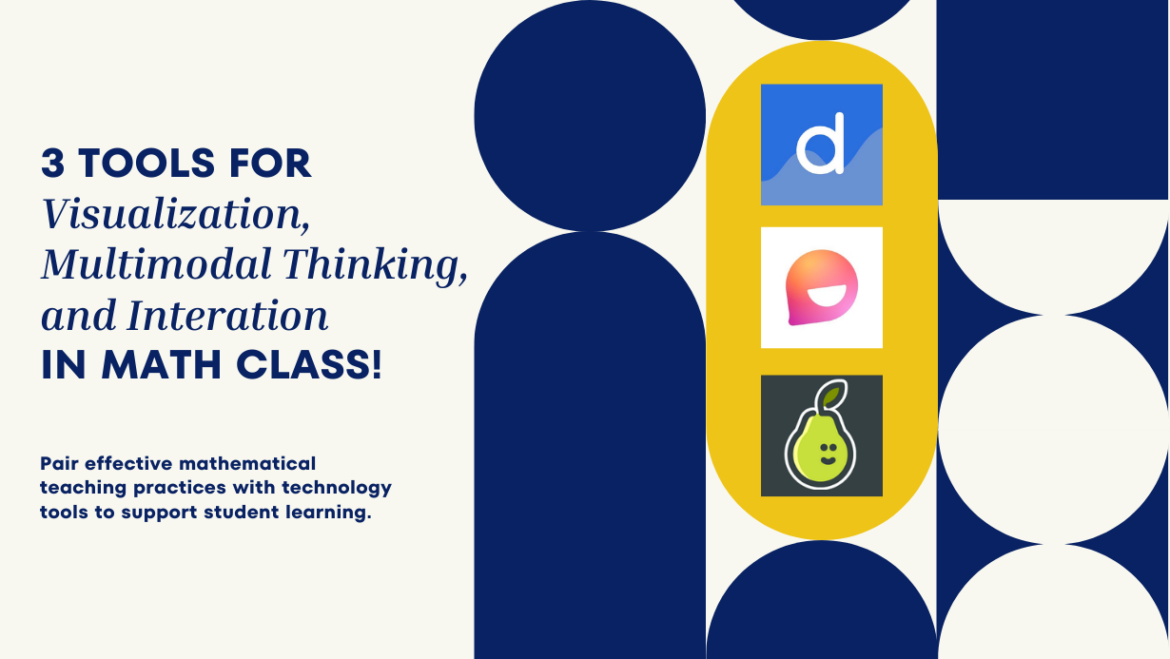Math is one of those subjects that elicits strong emotions from educators because when most of us today were in school, it was all about getting the right answer. Now, that is no longer the case in today’s schools. We aren’t solely focused on just getting the answers anymore. We are focusing on the process of mathematical understanding – sharing our thinking in how we solve problems and learning from others’ perspectives.
According to the National Council of Mathematics, the world’s largest mathematics organization, there are eight mathematics teaching practices that develop mathematical understanding in all of our students. These teaching practices include focusing on learning, implementing tasks to focus on problem solving, facilitating mathematical discourse, and building students’ conceptual understanding.

But how can we better support our students’ mathematical understanding using best teaching practices and technology?
What is VMI?
As a tech coach, I am of course drawn to ways that technology can support this pursuit. Over the course of the past few years as I have worked with teachers both inside and outside my district, I have noticed three ways that technology tools can support the development of students’ mathematical skills and understanding. I call them VMI or Visualize Math Concepts, Multimodal Thinking, and Interaction.

V: Visualize Math Concepts
Does the tech tool allow our students to visualize math in a way not possible without the technology? All of our students have unique ways of demonstrating their mathematical understanding. As NCTM’s Principles to Actions shares, “An excellent mathematics program integrates the use of mathematical tools and technology as essential resources to help students learn and make sense of mathematical ideas, reason mathematically, and communicate their mathematical thinking.”
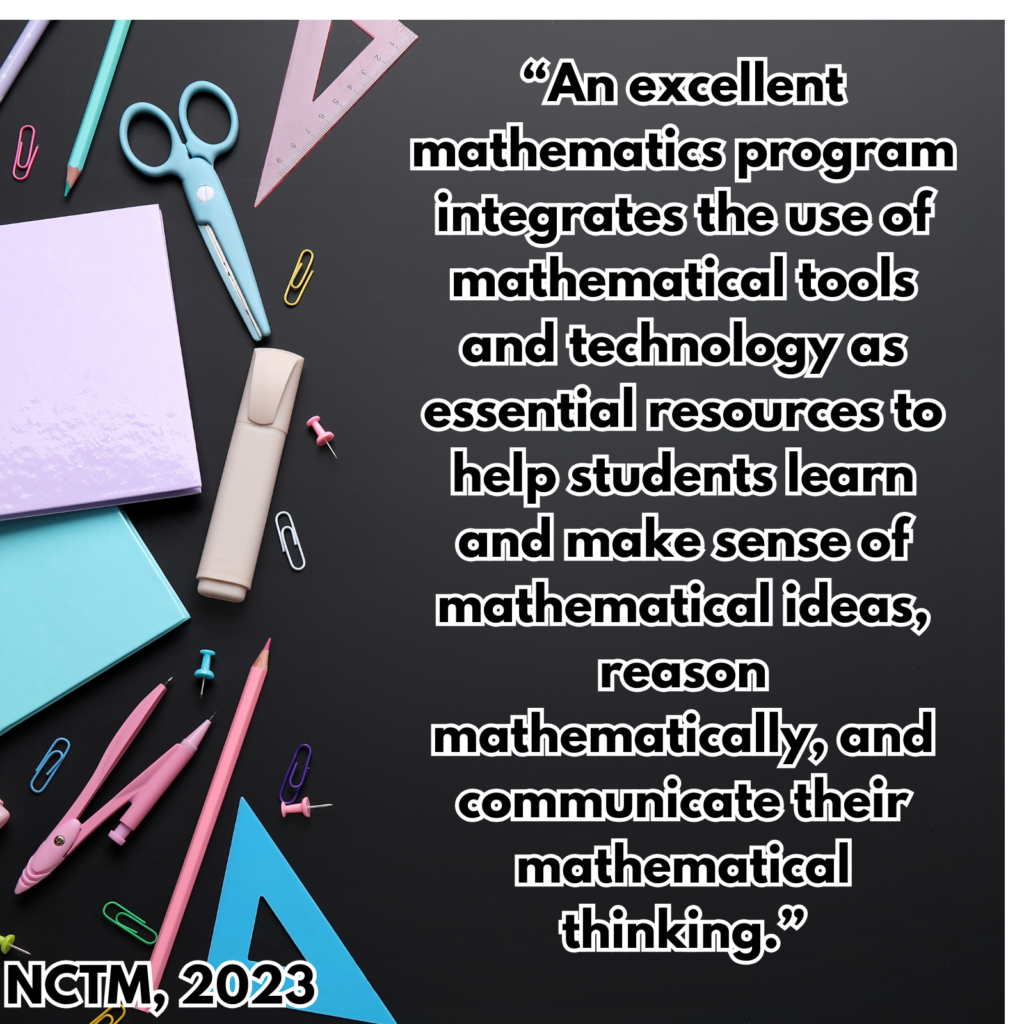
M: Multimodal Thinking
Does the tech tool offer students more than one way to share their thinking and show their mathematical understanding? All of our students share their thinking differently. Are we providing them choices in how they share? Using multimodal thinking helps educators incorporate Universal Design for Learning (UDL) and give our students different ways to represent their ideas. Can students use video, audio, images, paint tools, text and speech to text? Technology offers us a variety of ways to support multimodal thinking.
I: Interaction
Does the tech tool empower our students to interact with others’ mathematical thinking? Our students need opportunities to learn with and from each other? Collaboration is such a vital skill in our world and it starts by learning how to share ideas and respond to others’ ideas. We need to help our students to engage in math discourse to create a shared understanding of math concepts. There is no longer just one way to solve a problem.
Tech Tools That Promote VMI
“What tech tools best incorporate VMI?”, you might be asking. Let’s look at three free, amazing tools that can promote both VMI and support mathematical understanding for all students. Of course, these are not all of the tools that demonstrate VMI, just my top three VMI tech tools.
Desmos
If you think of Desmos as just a graphing calculator, then you are truly missing out. Desmos is so much more than that! Desmos also includes a variety of classroom activities that promote not only visualization, multimodal thinking, but also interaction. Desmos Classroom Activities includes the ability to create so many different types of pages with different features. Some of my favorite features include interactive tools like sliders and polypads. It also provides students with many ways to share their thinking and show mathematical understanding, including drawing tools, text, and even audio options. In addition, Desmos has an amazing feature called a polygraph (think “Guess Who” for Math) that allows students to work in pairs to determine which picture their partner has chosen.
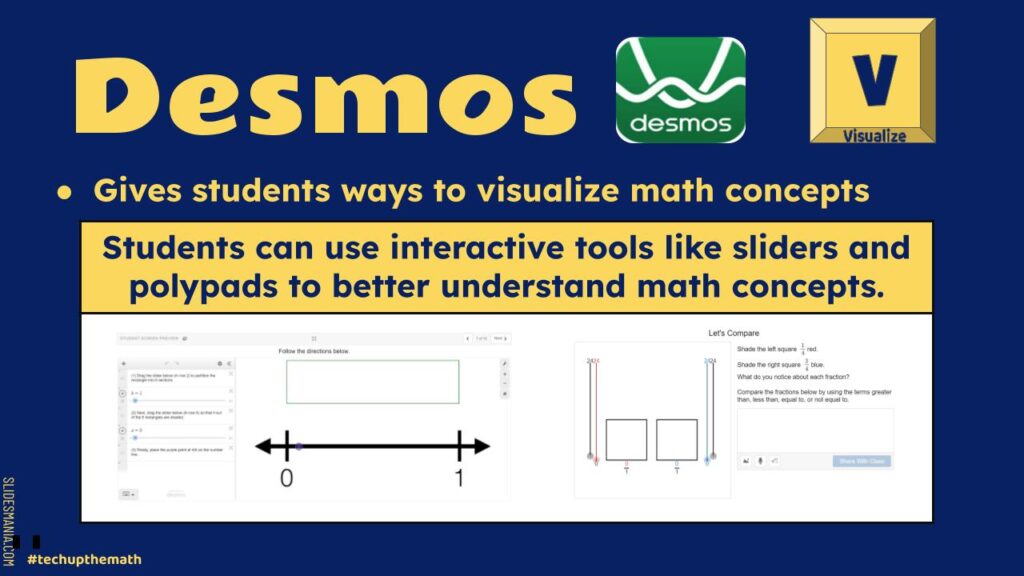
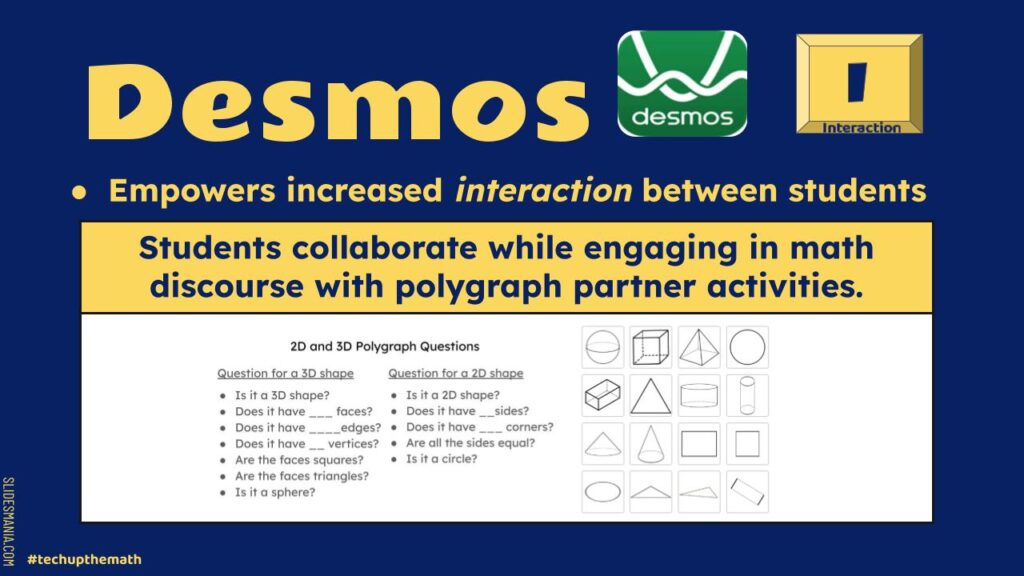
Flip
Flip, previously known as Flipgrid, is another truly exceptional tool. It is so much more now than a video discussion board. Flip helps students visualize math and use multimodal thinking using its many features. Its features include drawing tools, stickers, text, boards, audio, and video options. It even offers backdrops and filters. Flip also allows students to interact with each other’s ideas through the use of text, audio, and/or video. It’s a great tool for students to share their thinking and demonstrate mathematical understanding collaboratively.

Flashcard Factory
Flashcard Factory is a free part of Pear Deck that is often overlooked. It allows our students to make interactive flashcards in pairs and can be an extremely important tech tool in our math classrooms. Students log in using a code that is displayed on their projector to get started. They are then randomly partnered up and given problems chosen by their teacher to solve. Pairs are either part of the factory “day shift” or “night shift” teams.
One student in the pair acts as the artist, showing how to solve the problem; while the other student acts as the detective, showing an answer, an equation, or even a word problem based on their teacher’s directions. Students can sit side by side as they solve their part of the problem and roles can change frequently.
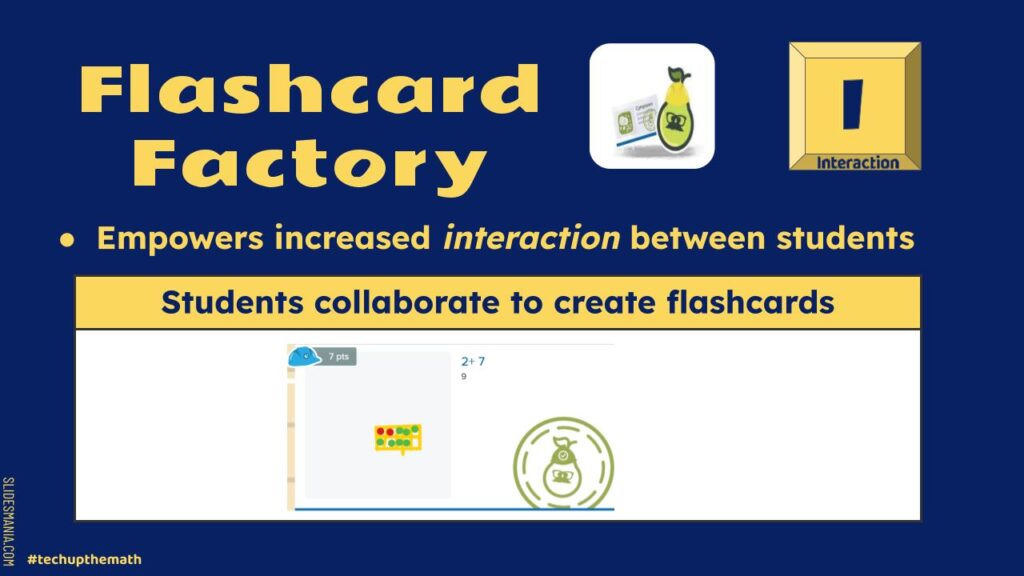
After about 15 minutes, the class comes back together and goes through Quality Control when the class determines whether the problem (shown anonymously) is a good example or not. Good examples earn their team a point. After Quality Control, good examples can be exported to Gimkit for further practice.
As you can see in the picture, you can use this tool for almost any math concept and for students of any age. For first graders, students may do addition and subtraction facts within 10. Third graders can use it for multiplication facts within 100; while one student draws the array and the other writes a word problem. By sixth grade, the students can use it for multiplying and/or dividing fractions. It is very versatile!
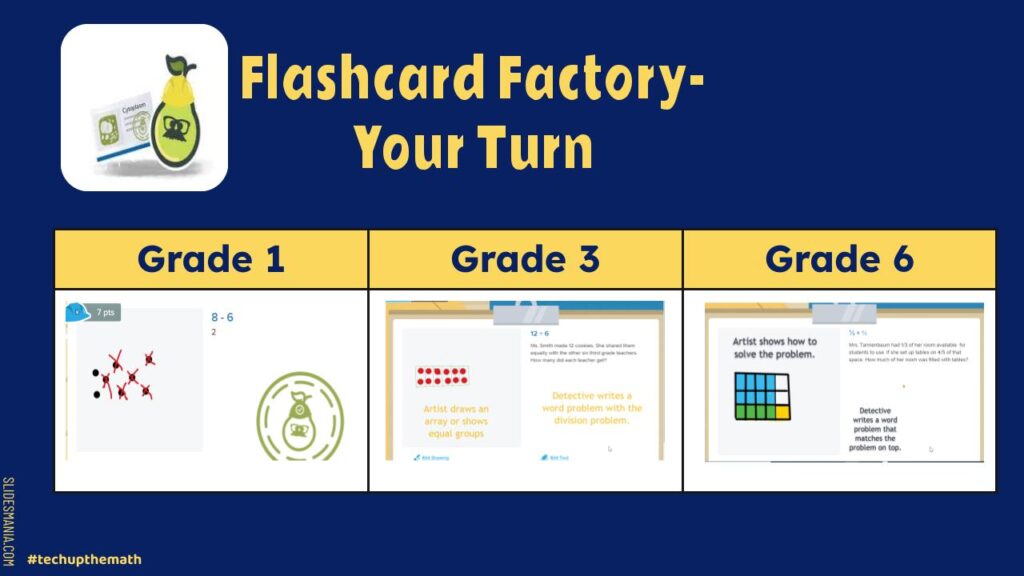
In today’s world, when our students are building mathematical understanding and proficiency, we need to consider how tech tools like these can help students make sense of math and build math connections. Which one will you try first in your math classroom to impact student learning? With tools like these, there is no wrong answer.
Debbie Tannenbaum will be leading three sessions at TCEA’s 2024 Convention & Exposition!
- Creating Artifacts of Learning Using Thinking Routines and Digital Tools
- Edpuzzle for Littles: Interactive Video Learning for Elementary Students
- Tech Up the Math
If you want to learn more about pairing technology and instructional best practices in math, attend Debbie’s “Tech Up the Math” session on Monday, February 5. Early bird pricing for TCEA 2024 ends November 3. That’s THIS Friday! Don’t miss your chance to save up to $100 on the educator event of the year that will help you drive great outcomes.

